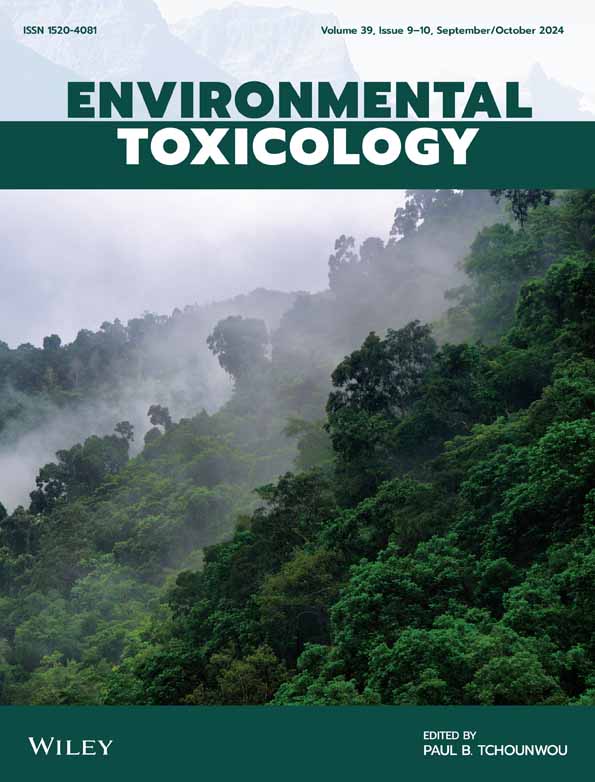通过氧化石墨烯催化reazurin还原增强微生物传感,一种用于诊断和电化学应用的通用方法
IF 3.2
3区 医学
Q2 ENVIRONMENTAL SCIENCES
引用次数: 0
摘要
reazurin是一种细胞活力的苯恶嗪染料,广泛用于细菌监测,因为它的比色和荧光转换反映了微生物的代谢活性。在这项工作中,我们证明了氧化石墨烯(GO),一种具有高表面反应性的二维纳米材料,在金黄色葡萄球菌存在的情况下显着加速了reazurin的还原,从而在非细胞毒性浓度下实现了微生物的快速检测。重要的是,这种氧化石墨烯介导的增强直接支持环境毒理学的应用。快速鉴定水和环境样品中的细菌污染物对于评估有毒接触至关重要,例如由饮用水致病性污染引起的接触。通过降低检测活菌所需的时间,GO-resazurin系统为评估环境质量和与微生物污染相关的潜在健康风险提供了一个敏感而实用的工具。虽然氧化石墨烯和reazurin在没有细胞的情况下缺乏相互作用,但与其他被测细菌相比,金黄色葡萄球菌的代谢特异性地增加了探针对碳材料的电子穿梭。此外,通过对间苯二酚/氧化石墨烯/细菌相互作用的全面荧光光谱表征,我们证明了间苯二酚的显色损失增强,揭示了在革命性的环境监测、污染物降解和微生物燃料电池设计方面的潜在应用。这些发现突出了氧化石墨烯作为催化增强剂的作用,使暴露评估的早期预警系统更加敏感,提高污染监测的准确性,并促进有效和可持续的有毒物质清除修复策略。本文章由计算机程序翻译,如有差异,请以英文原文为准。
Enhanced Microbial Sensing via Resazurin Reduction Catalyzed by Graphene Oxide, A Versatile Approach for Diagnostics and Electrochemical Applications
Resazurin is a cell viability phenoxazine dye widely employed for bacterial monitoring, as its colorimetric and fluorometric conversion reflects microbial metabolic activity. In this work, we demonstrate that graphene oxide (GO), a two‐dimensional nanomaterial with high surface reactivity, markedly accelerates the reduction of resazurin in the presence of Staphylococcus aureus S. aureus
求助全文
通过发布文献求助,成功后即可免费获取论文全文。
去求助
来源期刊

Environmental Toxicology
环境科学-毒理学
CiteScore
7.10
自引率
8.90%
发文量
261
审稿时长
4.5 months
期刊介绍:
The journal publishes in the areas of toxicity and toxicology of environmental pollutants in air, dust, sediment, soil and water, and natural toxins in the environment.Of particular interest are:
Toxic or biologically disruptive impacts of anthropogenic chemicals such as pharmaceuticals, industrial organics, agricultural chemicals, and by-products such as chlorinated compounds from water disinfection and waste incineration;
Natural toxins and their impacts;
Biotransformation and metabolism of toxigenic compounds, food chains for toxin accumulation or biodegradation;
Assays of toxicity, endocrine disruption, mutagenicity, carcinogenicity, ecosystem impact and health hazard;
Environmental and public health risk assessment, environmental guidelines, environmental policy for toxicants.
 求助内容:
求助内容: 应助结果提醒方式:
应助结果提醒方式:


